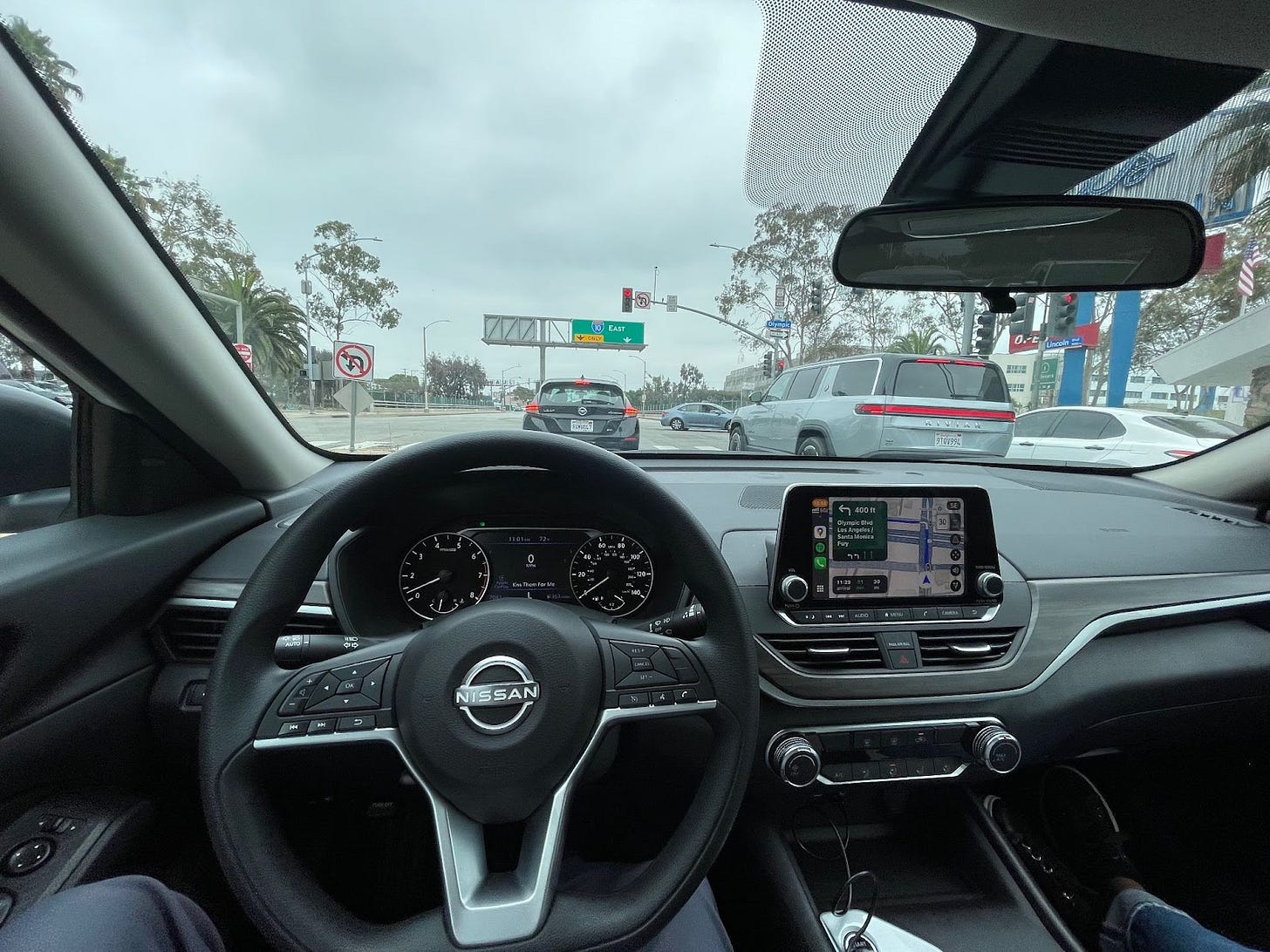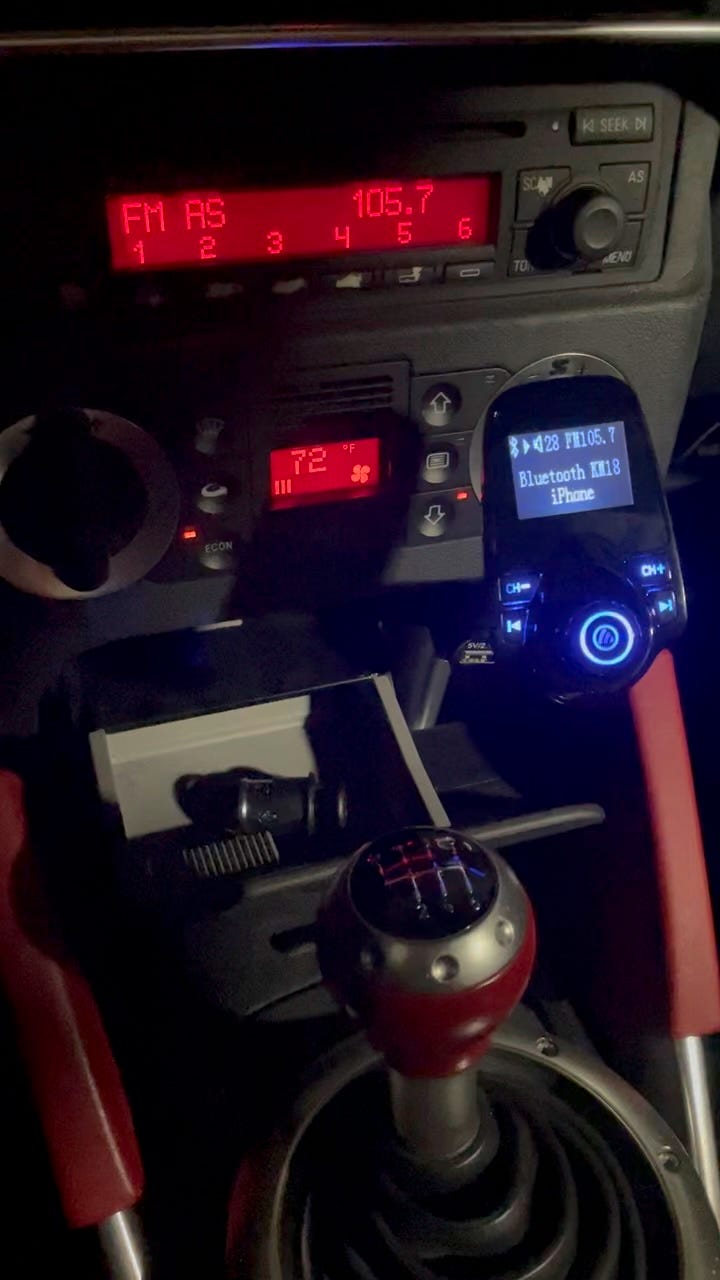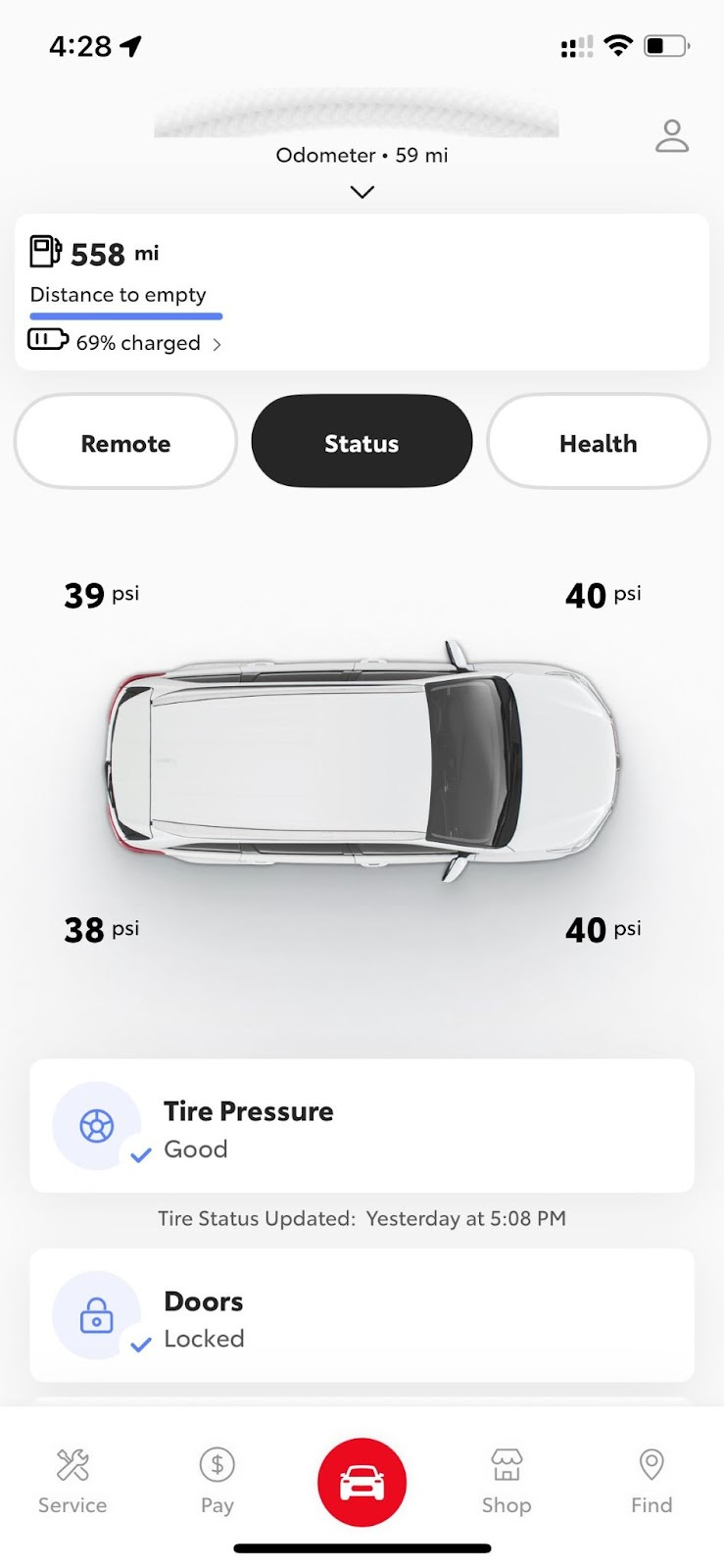From Status Symbol to Smart Device
How car buying changed for me
After my recent post about selling my 23-year-old Audi TT, a friend texted me something that made me laugh:
His message was a bit brutal, but it got me thinking about how fundamentally my own relationship with cars has changed.
When my car was part of my “personal brand”
I used to be a car guy. My automotive choices in my twenties and thirties were those of an avid Car & Driver reader: a 1990 Mitsubishi Eclipse GS Turbo, a 1994 BMW 325i, and a 2002 Audi TT ALMS Edition. The Eclipse and 325i were “10Best” winners the year I bought them, and the TT was a 10Best winner in the two years before. Each likely said something about who I was — or at least what I wanted to project!
Back then, aesthetics, design, and reputation all mattered to me. In some sense, it might be fair to characterize in today’s language that I viewed the car as part of my personal brand. (We never used that term back then!)
Functionality took priority
Somewhere along the way, my relationship to my car changed. During our child-rearing years, we owned two minivans—a 1998 Plymouth Grand Voyager SE and a 2005 Toyota Sienna AWD. These vehicles weren't cool, but they solved real problems, including serving as a portable apartment for naps and diaper changes, seating up to seven people, and fitting all the stuff we bought on our most voluminous Costco runs with full confidence.
Maybe the minivans were still expressing personality — the personality of Marsha as a “stay-at-home Mom” or of the two of us in “family mode.” However, these vehicles to me were much more about function, not style.
CarPlay as a Game-Changer
A significant turning point for me came around 2019 when renting cars during vacations. We'd climb into rental cars — even compact or economy cars— with Apple CarPlay and feel like we're in total luxury.
Meanwhile, our 2011 BMW 328xi — which we once considered “modern” — felt ancient without the ability to stream Bluetooth audio or run Google Maps on a big screen.
My 2002 Audi TT was even worse. I jury-rigged a cheap Bluetooth-to-FM adapter plugged into a cigarette lighter, with my iPhone clipped to a heat vent. I completely ruined this award-winning design icon, with some ugly bridging technology just so I could listen to podcasts through the stereo system while driving.
That's when I realized that CarPlay integration had become more important to me than how the car looked or even how it drove.
Cars as Tech Gadgets
Once I started viewing cars as tech gadgets, everything changed. I became okay with having what everyone else was driving, taking advantage of economies of scale. I'd already done this with computers and phones—using a MacBook Air and iPhone like millions of others instead of seeking some unique expression of my personality through hardware.
This shift brings a different relationship with ownership. Just as I replace my tech devices every few years to stay current, I now expect to do the same with cars. I don't really feel as if I "own" my iPhone — I essentially “rent” it from Apple, buying at list price and trading back at a depreciated trade-in value a few years later. Why should cars be different?
Our new Toyota RAV-4 Plug-in Hybrid is our first car that serves as an example of this tech gadget view. It has 42 miles of electric range, remote unlocking, sophisticated safety features, and all the right Apple CarPlay integration for maps, Spotify, and phone. It's also what a couple of good friends here in Portland own and like. I found myself comfortable following the recommendations of others.
Tech Gadget Lifecycles
This view of the car as a tech gadget has fundamentally altered how long I think it makes sense to keep cars. In the old days, German engineering meant hundreds of thousands of miles on the engine. We kept our 1994 BMW for 17 years and our Audi TT for 23 years. Neither ever had engine problems, and internal combustion technology moved slowly.
Today, the limiting factor isn't mechanical; it's digital. Cars without modern tech feel as obsolete to me as a computer that can't run current software. The pace of change in batteries, infotainment systems, and safety features can render today's cutting-edge technology totally obsolete.
That's why I chose a three-year lease this time. It's a technology purchase decision, not a long-term commitment to a piece of our identity.
Am I alone?
I suspect I'm not alone in this transition. I think there's likely a generational shift happening here — a move away from cars as personal statements toward cars as technology gadgets. I used to view myself as an “Apple fanboy” with my Apple II at age 12, my Mac IIcx in graduate school, or even my first Intel Mac Mini as late as 2006. However, by now, with my M4 Macbook Air, I have stopped caring about any potential uniqueness of my personal technology choices, and all of this has become pragmatic. I think the same is true for cars.
This doesn't mean cars are becoming boring. The technology is sophisticated, the safety features are genuinely impressive, and the environmental benefits of electrification have meaning to me. But the emotional relationship has changed. The car is no longer an extension of my personality; it's just a device I use like an iPhone or a Macbook.
Now almost a week after selling my old Audi TT, friends keep asking me if I miss it. I don't really. However, Marsha did indeed feel like the TT was a bit of an extension of me and was sad to see it go. A closing of a chapter perhaps.
For me, the car served its purpose for two decades, but that purpose has evolved. I no longer see any expression of my personality through my vehicle choice. I just want the functionality to get where I want to go with navigation and the ability to listen to podcasts, hopefully with some improved safety and minimal environmental impact.
And if something better comes out in the next three years, I plan to just switch.







The tech perspective is an interesting one when looking at cars. I think one reason this works for you/Marsha and many others is that most cars are just comfortable for you to drive. For Rebecca, there are only a handful of cars that she can be in for very long, and for her being the driver (which she prefers to do), the list is shorter.
So, we still have QX80s from 2016 and 2018 which definitely are not the most modern of electronics - particularly the 2016 one. However, the seat being flat, the suspension and steering being comfortable for her pain issues, made us buy the last model of the Armada (which is basically the same as the QX80) as a future proofing. This does have CarPlay and other bits. Since we are fortunate to move around between places, we had needs in having more cars.
Rebecca plans to keep each car at least 10-years as the new Armada/QX80 is not comfortable for her to drive. Hopefully Nissan/Infiniti will change it again before then. And even if CarPlay stopped working, she would be loathe to give up any of them. (And as mentioned, the 2016 and 2018 cars don’t even have it.)
(I still have my 2013 BMW. I had it built for me with exactly the packages I wanted. In 2018, I was able to find a way to replace the electronics so I ended up with CarPlay in it (although the radio functionality was lost in the process). That was a fine tradeoff as I could stream any radio stations anyway (and I rarely listen to radio). The car has low mileage and costs about $2000 per year in preventive and real maintenance. Still, that’s way lower than buying a new car and losing more in depreciation each year.)